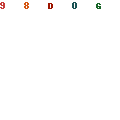10 Powerful Types swings in Golf Swings to Elevate Your Game
Table of Contents
Introduction
Having a range of strokes in your toolbox can significantly boost your overall performance on the course because golf is a precise sport. Every golfer should be able to execute types of swings in golf. You can become a more adaptable and successful golfer by honing your technique for each swing type, which needs a different set of skills and abilities.
Types of swings in golf is one of the most crucial styles of strokes in golf. This swing, which is a crucial part of any golfer’s game, is utilized to hit the ball as far as possible. The grip, stance, backswing, downswing, and follow-through of a full swing need to be carefully considered, and mastering these elements will dramatically increase your accuracy and distance off the tee.
There are various types of swings in golf outside the full swing that are essential for success on the game. Pitch shots, chip shots, bunker shots, and putting strokes are a few examples. Being able to use each of these swing types effectively on the course can help you negotiate a range of different situations. You can become a more adaptable and self-assured golfer by honing a skill set that is well-rounded and includes mastery in each of these swing types.
Related Post BUY TOP MOST DURABLE AND LONGEST LASTING GOLF GLOVES IN 2023

5 Powerful Types of Swings in Golf
Full Swing
One of the most crucial types of swings in golf is, the full swing is necessary for any golfer who wants to smash the ball as far as possible. This swing is commonly utilized off the tee, and it must be completed correctly by paying close attention to the grip, stance, backswing, downswing, and follow-through. A perfect full swing can help you hit the ball farther and with more precision off the tee, which will ultimately raise your course score.
Creating the right grip and stance is the first step to mastering the whole swing. Your posture should be shoulder-width apart with your knees slightly bent, and your grip should be solid but not overly tight. You can start your backswing by moving your hips and turning your shoulders away from the ball once you have gotten into a good grip and stance. You may build strength and momentum for your downswing by doing this.
On a full swing, the downswing is when the major action takes place. You should now begin moving forward and shift your weight from your rear foot to your front foot. Maintaining a fluid and smooth action as you swing through the ball can help you finish with a balanced follow-through. You may create a reliable and efficient full swing that will help you perform better on the golf field with practice and the right technique.
Related Post MASTERING YOUR GRIP: THE ULTIMATE GUIDE ON HOW TIGHT SHOULD A GOLF GLOVE BE

Pitch Shot
Types of swings in golf also include the pitch shot, which is generally employed when you need to hit the ball far but with a high trajectory. When you are near to the green and need to get the ball up and over a hurdle, like a bunker or a slope, this kind of shot is extremely helpful. The grip, stance, backswing, downswing, and follow-through of a pitch shot need to be carefully considered, and understanding these elements will help you execute the shot more accurately and consistently.
You should take a tight stance and place some of your weight on your front foot before starting a pitch shot. Your wrists should be at ease, and your grasp should be loose. Keep your wrists strong and slightly bend them as you swing back to produce a sharper angle of attack on the ball. You can increase the loft and height of your shot by doing this.
You should move your weight forward and keep a flowing action as you swing through the ball. Your follow-through should be controlled and high, with your arms fully extended and your body maintaining upright. You may create a reliable and efficient pitch shot with practice and the right technique, which will help you get through a range of tricky circumstances on the course.
In conclusion, the pitch shot is a crucial kind of swing in golf that can significantly raise your level of play. You can become a more skilled and effective golfer by perfecting the technique and creating a reliable swing.
Related Post 10 ESSENTIAL WOMEN’S GOLF TIPS FOR BEGINNERS

Chip Shot
When you need to hit the ball far yet with a low trajectory, you can employ a style of swing in golf called a chip shot. When you are close to the green and need to get the ball to roll onto the putting surface, you usually employ this stroke. The grip, posture, backswing, downswing, and follow-through of a chip shot need to be carefully considered, and understanding these elements will help you perform the shot more accurately and consistently.
You should take a narrow stance and place some of your weight on your front foot before starting a chip shot. Lightness in your grasp and firmness in your wrists are ideal. Keep your wrists firmly closed and your arms close to your body when you swing back. You’ll be able to swing through the ball with more control and accuracy if you do this. Read more
You should move your weight forward and keep a flowing action as you swing through the ball. Your follow-through should be controlled and brief, with your arms only slightly extended and your body maintaining in balance. Accuracy and distance management are essential for a chip shot because the objective is to get the ball to roll onto the green and halt as quickly as possible.
With practice and the proper technique, you may develop a reliable and effective chip shot that will help you in a variety of challenging situations on the course. Learning this important type of swing can help you become more versatile and effective as a golfer.
Bunker Shot
The bunker shot is a types of swings in golf that is used when the ball is buried in sand. For many golfers, this shot can be difficult since it takes close attention to the grip, stance, backswing, downswing, and follow-through. Yet with effort and the right technique, you can master a bunker shot that consistently gets you out of the sand and back onto the green.
You should take a wide stance and equally distribute your weight between your feet before starting a bunker shot. Lightness in your grasp and firmness in your wrists are ideal. Your wrists should be somewhat hinged when you swing back to produce a sharper angle of attack on the ball. You can increase the loft and height of your shot by doing this.
Aim to strike the sand directly behind the ball as you swing through the sand. You’ll be able to move the ball from the bunker and onto the green using this. Your follow-through should be controlled and high, with your arms fully extended and your body maintaining upright. You can master a bunker shot that consistently and successfully gets you out of even the trickiest sand traps on the course with repetition and the right technique.
In conclusion, the bunker shot is a crucial golf swing type that can significantly raise your overall course performance. You can become a more skilled and effective golfer by perfecting the technique and creating a reliable swing. The bunker shot is a crucial technique to have in your golfing repertoire, regardless of your level of experience.

Putting Stroke
A crucial golf swing type employed on the green to direct the ball into the hole is the putting stroke. Although putting may appear to be a straightforward exercise, it actually takes a high level of expertise and accuracy. In order to execute a perfect putting stroke, you must pay close attention to your grip, stance, backswing, downswing, and follow-through. By mastering these elements, you may improve your putting accuracy and consistency.
You should adopt a narrow stance with your feet shoulder-width apart and your weight evenly distributed between your feet before starting a putting stroke. Your wrists should be at ease, and your grasp should be loose. Keep your wrists firmly closed and your arms close to your body when you swing back. You’ll be able to swing through the ball with more control and accuracy if you do this.
You should move your weight forward and keep a flowing action as you swing through the ball. Your follow-through should be controlled and brief, with your arms only slightly extended and your body maintaining balance. Accuracy and distance control are key components of a putting stroke because the objective is to move the ball into the hole with the fewest number of strokes feasible.
You may create a reliable and efficient putting stroke that will enable you to make more putts and shoot lower scores with practice and the right technique. You may improve your confidence and success on the greens by learning these fundamental golf swing styles.
Conclusion
In conclusion, perfecting the types of swings in golf is necessary for developing into a well-rounded and effective golfer. To improve consistency and precision, each style of swing demands careful attention to technique and practice.
The entire swing is the cornerstone of every golfer’s game, and perfecting it can help you hit the ball farther and with more precision. Pitch shots, chips, and bunker shots are all crucial swings that can aid you in overcoming a range of difficult circumstances surrounding the green. Last but not least, improving your putting stroke will help you make more putts and score less.
Developing appropriate technique and honing each type of swing will significantly enhance your performance on the course, regardless of your level of experience. You may improve your versatility and confidence as a player and increase your enjoyment of the game by concentrating on perfecting the various golf strokes.

Question
What are different golf swings called?
Golfers employ a variety of swings that come in many different varieties. The full swing, pitch shot, chip shot, bunker shot, and putting stroke are some of the most popular golf swings. The ability to perform each type of swing successfully can help you develop into a more well-rounded and effective golfer.
What is the best golf swing method?
Because of the fact that every golfer has unique physical characteristics, strengths, and limitations, there is no one “perfect” golf swing technique that applies to everyone. The golf swing technique that most suits your own preferences and aids in improving your game on the course in terms of accuracy, distance, and consistency is the most efficient. Working with a good instructor, practising frequently, and experimenting with various swing approaches will help you identify the golf swing technique that works best for you and your game.
What are the 4 stages of a golf swing?
The takeaway, backswing, downswing, and follow-through motions make up a golf swing. The backswing is the upward movement of the club as the player gets ready to strike the ball, whereas the takeout is the initial movement of the club away from the ball. The follow-through is the ultimate extension of the club and body after the ball has been struck. The downswing is the powerful downward motion of the club toward the ball. For the purpose of creating a reliable and powerful golf swing, these four stages are essential.
What are the 3 different types of grips golf?
The overlap grip, interlock grip, and ten-finger grip are the three different types of grips used in golf. In the overlap grip, the pinky finger of the bottom hand is positioned over the space between the top hand’s index and middle fingers. The pinky finger of the bottom hand is interlocked with the index finger of the top hand to form the interlock grip. To use the ten-finger grip, all ten fingers must be directly on the club without touching or overlapping. Golfers should try to determine the grip that works best for their game because each grip has pros and disadvantages of its own.
What are the 2 types of golf swings?
The full swing and the short game swing are the two primary styles of golf swings. The short game swing is used for shorter shots around the green and involves a shorter backswing and less forceful follow-through whereas the full swing is used for longer shots and involves a greater backswing and follow-through. Golfers can improve their accuracy and consistency on the course by learning both types of swings, which each call for different approaches and abilities.
How many golf swings are there?
Players can make a variety of swings in golf, including the full swing, pitch shot, chip shot, bunker shot, and putting stroke. There is no set amount of golf swings, though, as players frequently combine these swings and alter them depending on their personal playing styles and the circumstances on the course.
What is the secret to the golf swing?
The golf swing is a complicated and highly individualised movement that depends on a number of variables, including technique, physical aptitude, and mental focus. There is no one secret to the golf swing. Proper posture and alignment, a fluid and controlled backswing, a strong but fluid downswing, and a steady follow-through are some elements of a successful golf swing. Moreover, consistent practice, sound physical preparation, and mental concentration can all enhance your golf swing and overall course performance.e.






